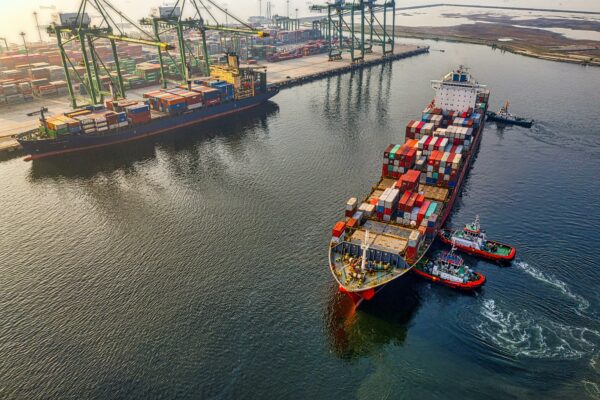Do shippers now have the power in contract negotiations?
Dec 05, 2022
Scroll to find out more
Dec 05, 2022
Scroll to find out more

In periods of demand volatility, being a shipper can feel like being stuck between a rock and a hard place, balancing changing appetite from consumers on one side and carrier obligations on the other. Finding the flexibility to manage volumes, rates and contracts requires working using your relationships with partners to find solutions that balance freight commitments with realistic volumes and long term priorities.
Shippers face the challenge of adjusting shipping volumes and trying to identify where best to keep inventory, destocking warehouses and changing the way they work with their carriers and forwarders to set lower expectations on volume.
To understand how shippers are managing this task, we recently spoke to Chantal McRoberts, Head of Advisory at shipping consultancy Drewry at our virtual event Navigate 2023, now featured on our podcast Freight to the Point. Chantal is currently works with a range of international clients on shipping strategy, negotiation and planning – here we discuss how shippers can navigate market volatility with their partners.
This year’s contract season has been dominated by the ongoing volatility in rates and demand across the market. As much as carriers wield much of the power when it comes to setting rates and enforcing contracts, the widespread nature of the current volume drop is forcing a compromised attitude. Shippers just don’t have the volume to support their commitments to carriers, encouraging both sides trying to find a compromise on the volume commitments which aren’t being reached versus retaining cargo which is available to ship.
‘Our advice at the moment, is to go back to your contracts, try and leverage your provider relationship, revisit the terms, try to talk about what would be an acceptable level on the MQC versus the dead freight’, says Chantal.
This is also going to shape the outlook for contracts going forward, empowering shippers who have available volume to set their terms – with many expecting rates to stay low or fall again, no one wants to get tied into a higher rate when the spot market offers good deals.
‘In our view, contract negotiations will no longer be about capacity and allocation. It will be very much strategic and about what rates are acceptable to the shippers in the market.’ explains Chantal.
Tenders and contracts during a volatile period depend heavily on timing – who’s moving when, how conditions evolve and what happens next. ‘It’s really about picking your moment, having the knowledge to hand and then thinking about renegotiating rather than going to the spot market,’ says Chantal. This gives shippers multiple options depending on their volumes, risk potential and goals.
However, while these can be effective routes to short term value and outcomes, the long term view is still vital for shippers, especially when aiming to be a ‘shipper of choice’.
Creating a value driven partnership with your carrier or freight forwarder remains key to driving long term value for your supply chain. While going it alone on the spot market can see attractive when rates are down, it also prevents shippers building strategic improvements into their processes and relationships.
‘If you stop having those conversations and you go down the route of being purely transactional and demanding the lowest rate, because you know the market has moved down, then effectively operationally you could be impacted.’ warns Chantal.
However, these relationships are subject to evolve – as the market favours shippers, carriers will be encouraged to offer more value to retain the volume available and collaborate more effectively on the big picture.
‘There’s bigger subjects than freight rates probably on the horizon – sustainability and carbon neutral shipping, for example, all require a relationship to understand how everybody is going to calculate that and how it will be used to make decisions.’ says Chantal.
As carriers compete for the volume available in the market, it’s essential that shippers use the right data to drive their strategy, negotiations and planning. Through our platform, Zencargo customers are able to source, track and analyse data from across their supply chain, from purchase order visibility to supplier lead time insights, to understand what’s really going on with their inventory and make the right decisions for ordering and shipping.
By understanding historic performance, shippers can only plan volumes more effectively, but also ask carriers the right questions when it comes to collaboration. That’s why it’s key to make sure you have the right insight, advice and support as you go to the market.
Our experts work with the fastest growing businesses to help them optimise their supply chain performance with real-time visibility, communication and analysis, combined with world-class freight forwarding services. To find out how you plan with confidence, get in touch with our team today.

If you’re looking for a partner who can support you through 2024, and beyond, w...

Last updated: Monday 3pm BST On Friday 19th July, an unprecedented global issue...
